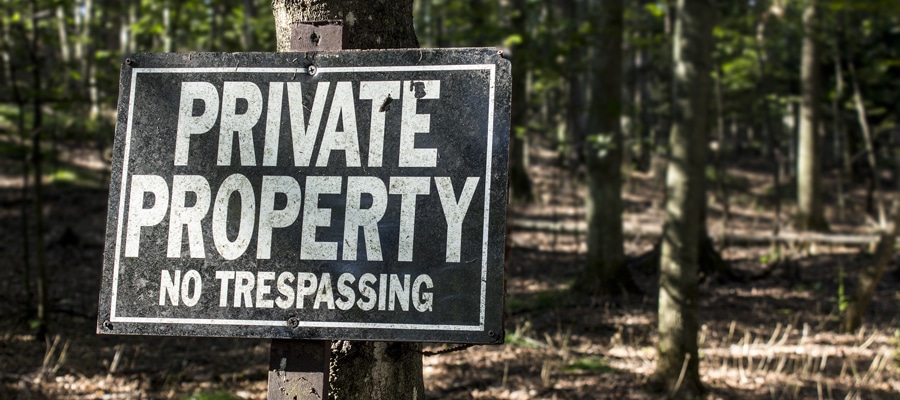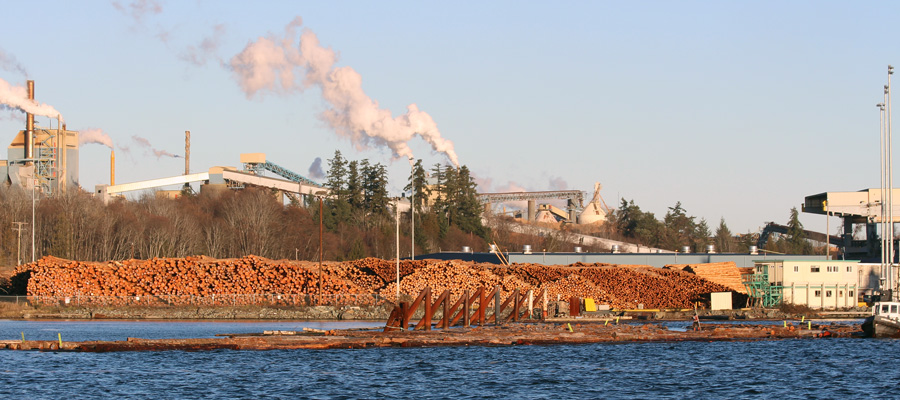Time for a forest reserve

Almost inevitably, when someone suggests that logging of privately-owned lands should be subject to tougher regulations, there is an outcry from landowners. It is “their” land after all.
But this ignores important historical realities in British Columbia—realities that are hopefully being considered in a current review by the provincial government.
Up until 2003, a much different set of rules prevailed. Logging companies accepted that there were certain things that they could and could not do on private lands.
The situation on Vancouver Island is particularly instructive in this regard. Starting in 1884, various land grants to the Esquimalt & Nanaimo Railway Company established 800,000 hectares of “private land” on what were in truth Indigenous territories on the island. The land was considered payment for the construction of a 115 km rail line from Esquimalt to Nanaimo. Robert Morales, chief negotiator for the Hul’qumi’num Treaty Group, aptly described the grants as “the great land grab.”
The grants turned one quarter of the island into a massive tract of private land. Today, Island Timberlands and TimberWest hold more than 500,000 hectares of those lands. They log them heavily. And, when prices are right, they sell parcels of them off for suburban developments. Western Forest Products is another key holder of private forest land on the island, owning 23,293 hectares of land further to the north.
The logging these three companies are engaged in is not what the architects of provincial forest policy had in mind three quarters of a century ago when a Royal Commission created a new forest tenure known as Forest Management Licences (later known as Tree Farm Licences). The new licences allowed companies to apply for rights to log publicly owned or “Crown” forest, in exchange for bundling their private lands with public lands and managing them as one. Companies then agreed to limits on logging known as “allowable annual cuts”. They also agreed to not convert the forest lands to other uses.
That is how things remained essentially until 2003, when the provincial government rewrote the rules with the Private Managed Forest Lands Act or PMFLA.
Up until 2003, a much different set of rules prevailed. Logging companies accepted that there were certain things that they could and could not do on private lands.
The act drastically reduced government oversight by removing limits on the number of trees that could be logged on private lands. It also lifted restrictions on where companies were required to process timber. To no one’s surprise, companies responded by yanking their private lands out of their Tree Farm Licences, accelerating their logging, and disenfranchising communities, especially Indigenous groups, along the way.
In the most recent ten years, Island Timberlands has been the most aggressive of the “big three”, cutting 1.9 million cubic metres of trees annually. TimberWest has been close behind, falling just shy of 1.8 million cubic metres annually, while Western Forest Products, has harvested nearly 290,000 cubic metres of timber per year over the same ten years.
These numbers take on added significance when one considers that a single cubic metre of wood is equal to one telephone pole’s worth of wood, and that the private land logging of Western alone produces enough logs to run one coastal sawmill. Great numbers of those logs, however, never enter a sawmill. They are exported in raw, unprocessed form instead, against a depressing backdrop of more mill closures and further job losses.
In the most recent ten years, two out of every three trees logged by TimberWest and Island Timberlands were Douglas fir trees, leading to a steady erosion in one of the West Coast’s most important ecosystems.
The economic losses associated with such exports also have an ecological corollary. In the most recent ten years, two out of every three trees logged by TimberWest and Island Timberlands were Douglas fir trees, leading to a steady erosion in one of the West Coast’s most important ecosystems.
Sadly, there is little to suggest that the two former companies—owned wholly or in part by three government pension funds, including the British Columbia Investment Management Corporation, intend to change direction any time soon.
What could an alternative look like?
In the early 1970s, the provincial government introduced one of the most comprehensive pieces of legislation to protect farmland anywhere in the world. The creation of the Agricultural Land Reserve or ALR came about because the government of the day recognized that farmland was a finite resource, that it faced myriad threats, and that regulations were needed to protect such lands from further industrial and suburban encroachment.
The University of Victoria’s Environmental Law Centre (ELC) has recently suggested that such a model is precisely what is needed for private forestlands in the province. The respected ELC, which is known for its thorough reviews of contemporary environmental challenges and its thoughtful policy recommendations, also says other reforms are needed to ensure that private forestlands are managed to a standard that approaches and ultimately exceeds what the Royal Commission recommended decades ago.
Among other things, the ELC believes that local governments should have powers to enforce laws to protect streamside forests and community watersheds from private land logging, and to ensure that where such forests are logged they are “logged sustainably.”
In the early 1970s, the provincial government introduced one of the most comprehensive pieces of legislation to protect farmland anywhere in the world.
A forest land reserve should be in place, modelled on the ALR, where sustainable forest management is the only accepted use of the land and where land-flipping is prohibited.
At a bare minimum the rules and regulations governing logging on Crown lands should also apply on private lands, including the all-important issue of how much forest can be logged at any one time. And limits on raw logs should be imposed, notwithstanding that the logging may be on private land.
Beyond that, there is the ongoing challenge of how to protect Indigenous rights on private forest lands. Clearly, a situation in which massive amounts of private land are held by just two companies both degrades forests and impedes treaty negotiations.
These policy solutions may be considered “radical” ideas by the corporations, and even BC pensioners, who have benefitted spectacularly from the deregulation ushered in 2003. But they are nothing of the sort.
In cities, homeowners and small business owners live with the realities of zoning restrictions every day. It’s time some of the biggest private land loggers in the province live with certain reasonable restrictions as well.
Topics: Environment, resources & sustainability, First Nations & Indigenous, Privatization, P3s & public services


